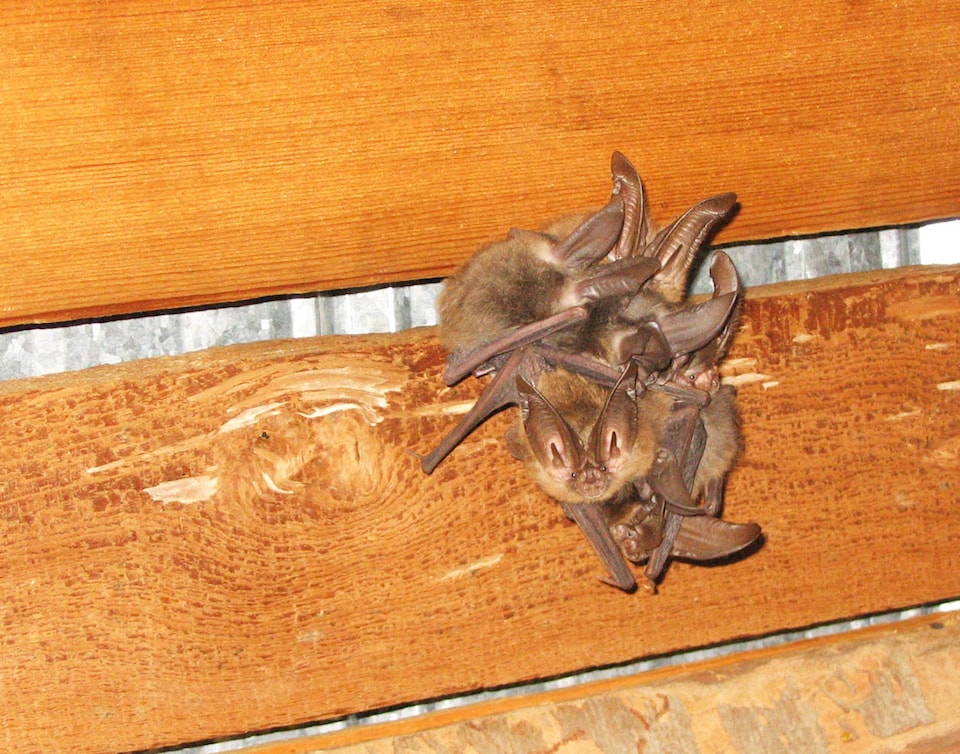With the devastating White Nose Syndrome looming, the Kootenay Community Bat Program (KCBP) is seeking volunteers and bat colonies for the annual bat count. The citizen-science initiative encourages residents to count bats at local roost sites.
“Bat counts are a wonderful way for residents to get involved in collecting important scientific information,” said Project Biologist with KCBP, Leigh Anne Isaac. “No special skills are needed, kids can be involved, and you can relax in a deck chair while counting.”
Isaac says that the importance of bat counts revolve around the fact that there is very little information about where, and how many, bats there are in the Kootenays.
“[This research] allows us to establish a solid baseline for understanding the magnitude of impact and the work that needs to be done in terms of a geographic focus,” said Isaac.
This year, the annual bat count will collect baseline data on bat populations before the White Nose Syndrome fungal disease affects bats in the province.
“White Nose Syndrome is estimated to have killed more than six million bats since it was first discovered in Eastern North America a decade ago,” said Biologist, Mandy Kellner, coordinator of the B.C. Bat Program. “In March 2016, the disease was detected just East of Seattle. This has greatly increased our urgency to understand bat populations in B.C..
“We need the public’s help to census local bat populations. The summer of 2017 may be our last year to obtain population estimates before White Nose Syndrome causes widespread declines in Western North America.”
Isaac says that the disease can decimate 95 to 100 per cent of bat populations.
“We know relatively little about bats in the Kootenay region including basic information on population numbers,” said Isaac. “This information will be extremely valuable, particularly if it is collected annually. If people want to get involved but don’t have a roost site on their property, we will try to match them with a roost site nearby.”
A roost site can be a bat-house, barn, bridge, church steeples or attic, anywhere that provides a summer home for female bats and their young. Volunteers wait outside a roost site and count the bats as they fly out at twilight. They record the final number along with basic information on weather conditions. Ideally, one to two counts are done between June 1 and June 21 before pups are born, and one to two more between July 21 and August 15 when pups are flying.
Isaac says that the ideal conditions for the bat counts are on a relatively warm day, where it is not rainy and not windy.
“If it’s nice for you to sit out, it will be nice for insects to be out, and nice for bats,” said Isaac.
According to the B.C. Bats website, these are the steps to take when participating in a bat count:
Arrive at your roost at sunset (bats will begin to emerge at dusk). The air temperature should be at least 12 degrees celsius, with low wind speed.
Stand or sit outside so that the bats’ exit point is visible from a comfortable distance. More than one person might be needed if bats are exiting from multiple points.
Tally the bats as they fly out for their nightly insect-eating. B.C. Bats can provide volunteers with a “hand clicker” to make counting easy. Record observations on the data sheet provided via the website.
Mail B.C. Bats the data sheet at the end of the summer.
Do not enter bat roosts or handle the animals, and respect private property; always ask for permission if the bat roost is on someone else’s land.
There are three levels for bat counting that volunteers can be involved in to help research efforts. Level one is the “bat reporter”, which involves one count over the summer between June 1 and 21. Level two is the “bat tracker”, which involves two counts between June 1 and 21. Finally, level three is the “bat enthusiast”, which involves two counts between June 1 and 21 and two counts between July 21 and August 15.
Funded by the Habitat Conservation Trust Foundation and with support of the B.C. Conservation foundation and the Province of B.C., Columbia Basin Trust, and the Columbia Valley Conservation Fund, the KCBP provides information for people dealing with bat issues on their property or have questions about how to attract bats. To find out more information, register for a bat count, or get assistance with bat issues, visit www.bcbats.ca or call 1-855-9BC-BATS (extension 14), or email kootenay@bcbats.ca.
